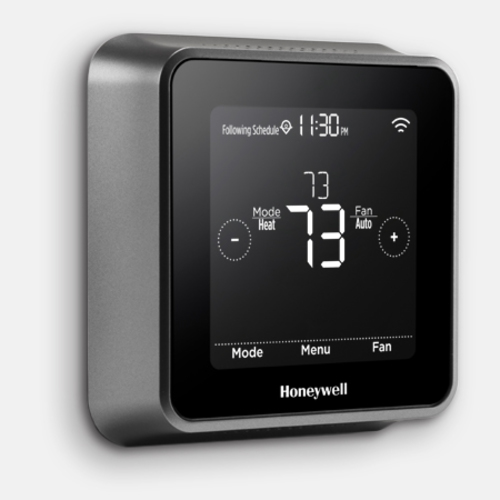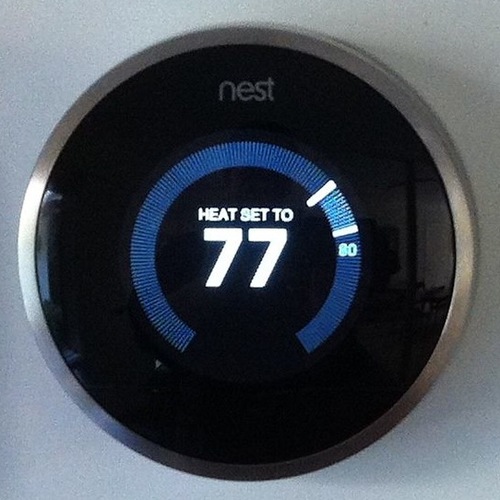
Earlier this fall, Amazon released the Amazon Smart Thermostat. At $60, the Energy Star–certified device is one of the most affordable smart thermostats available and one of the few that claims to do what the Nest thermostat impressed us with nearly a decade ago: learn your habits and create an energy-saving heating and cooling schedule based on them. Amazon co-branded their thermostat with Honeywell, ostensibly combining the tech giant’s expertise with connectivity—via Alexa—with the HVAC giant’s experience and reputation for making reliable heating and cooling controls.
The thermostat has few on-board controls, just a mode selection button and temperature up and down arrows, but it is the device’s Internet connectivity, and the ability to control the thermostat through the Alexa App that makes it “smart.” An optional AI feature within the app called “Hunches,” allows it to predict the appropriate settings for your home at any given time. Through the app you can also program the thermostat yourself and change the settings anytime, from anywhere that you have Internet access.
Amazon’s effort joins a growing number of thermostats that may be labeled “smart,” “WIFI-enabled,” or “connected,” depending on the manufacturer or where you are shopping. Folks into home-automation systems and the latest tech gadgets will enjoy geeking out on their smart thermostats, for sure. They are packed with features far beyond controlling temperature. The rest of us may benefit too, because the present and future of HVAC controls sure looks like a more foolproof path to energy savings and comfort than even the best un-connected thermostats can offer.
What is a “smart thermostat?”
The Amazon Smart Thermostat has a few features common in most smart thermostats, a category of HVAC controls characterized most generally by their WIFI connectivity—not all smart thermostats “learn” like the…
Weekly Newsletter
Get building science and energy efficiency advice, plus special offers, in your inbox.

This article is only available to GBA Prime Members
Sign up for a free trial and get instant access to this article as well as GBA’s complete library of premium articles and construction details.
Start Free TrialAlready a member? Log in















3 Comments
Some of the modern control systems do not use thermostat at all. All you need is a sensor that can read temperature, humidity and VOC, and then feed that back into a PID loop that is modulating a zone control. The zone control could be a valve or a damper that is adjusting to a set point. The thermostat can then be replaced with a touch screen UI/UX whether it be on a phone or on an app. The UI is just view into the controller.
So a UI for the shower experience may want to 1. Warm the floors; 2. Set the dimmer to 50%; 3. Modulate the ERV to pull the exhaust at 50 CFM until we bring the Relative humidity to 45%.
Put the controls in the utility room and don’t put openings into your walls.
Wi-fi is toxic for your heath. Everyone here should read Arthur Firstenburg "Invisible Rainbow", for all the peer reviewed science based explanation as to why. Or don't . Your health, your call.
To
The same Arthur Firstenburg who believes the flu isn't contagious, but rather an electrical disease?
Log in or become a member to post a comment.
Sign up Log in